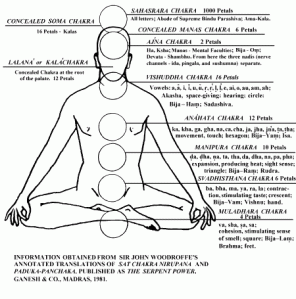Sriividya Upasana is very complicated and it needs a lot of patience and perseverance and most importantly familiarity with the terms in Tantra Shastra and a passing knowledge of Sanskrit is necessary.

What is Tantra?
"Tantra is that (Scripture) by which knowledge (Jñana) is spread (Tanyate, vistaryate jñanam anena, iti Tantram). The Suffix Tra is from the root 'to save'. That knowledge is spread which saves. What is that but religious knowledge? Therefore, as here and generally used, Tantra means a particular kind of religious scripture. The Kamika Agama of the Shaiva Siddhanta (Tantrantara Patala) says:
Tanoti vipulan arthan tattvamantra-samanvitan
Trananca kurute yasmat tantram ityabhidhyate.
(It is called Tantra because it promulgates great knowledge concerning Tattva and Mantra and because it saves.)-Arthur Avalon.
There is a feeling that the Tantra Shastra is related only to Shakti or Devi Worship.
It is not correct.
There are Tantras of other sects of the Agama, Tantras of Shaivas andVaishnavas.
The Tantra Shastra belongs to the Agamas, and not the Vedas.
The Agamas are divided into the following parts.
1.Shakta Agama,
2.Shaivagama, and
3.The Vaishnava Agama or Pancaratra.
Tenoktang sattvatang tantram yaj jnattva muktibhag bhavet
Yatra strishudradasanang sangskaro vaisnavah smritah
There are Agamas which follow the Vedas called, Vaidik Agama and others,Avaidikagama,Non Vedic.
Avaidika Agamas.
The Kurma Purana (XVI.1) mentions as Avaidika Agama, the Kapala, Lakula, Vama, Bhairava, Purva, Pashcima, Pañcaratra, Pashupata and many others.
Pashupata again is said to be both Vaidika and Avaidika such as Lakula.
Kurma Purana (Uttarabhaga, Ch. 38) says "By Me was first composed, for the attainment of Liberation, Shrauta (Vaidika) Pashupata which is excellent, subtle, and secret, the essence of Veda (Vedasara).
The learned devoted to Veda should meditate on Shiva Pashupati.
This is Pashupata Yoga to be practiced by seekers of Liberation.

Image credit.
http://www.workofthechariot.
By Me also have been spoken Pashupata, Soma, Lakula and Bhairava opposed to Veda (Vedavadaviruddhani).
These should not be practiced. They are outside The Veda." Sanatkumara Samhita says:
Shrautashrautavibhedena dvividhastu shivagamah
Shrutisaramapah shrautah sah punar dvividho matah
Svatantra itarash ceti svatantro dashadha pura
Tatha' shtadashadha pashcat siddhanta iti giyate
Itarah shrutisaras tu shatakoti-pravistarah.
.
The Shaiva Agama is of Two Kinds.
Sharautha and Ashrautha.
Shrauta is Shrautisaramaya and of two kinds, Svatantra and Itara.
Svatantra is first of ten kinds and then Siddhanta of eighteen kinds
(This is the Shaivasiddhanta Agama with 28 Mula Agamas and 207 Upagamas. It is Shuddhadvaita because in it there is no Visheshana).
Itara is Shrutisara with numerous varieties.
There are many schools of Shaivism and so are the Tantras associated with Shaivism.
The Devi Worshippers or Shaktas are of many kinds,of which three are important.
1.Those who follow 64 Tantras.-Ananta Shastry in the introduction to Anandalahari.(Kaulachara.
2.Eight Tantras-Mishra and
3.Five Tantras-Samaya sect.
There are many more.
But these five will do .
What are the Common Practices in Tantra?
Mantra,
Bija,
Yantra,
Mudra,
Nyasa,
Bhutashuddhi,
Kundaliyoga, construction and consecration of temples and images (Kriya), religious and social observances (Carya) such as Ahnika, Varnashramadharma, Utsava; and practical magic (Maya-yoga).
Where there is Mantra, Yantra, Nyasa, Diksha, Guru and the like, there is Tantra Shastra.
There are some extreme practices in some schools,
As also variations.
The Kaula rites are philosophically based on monistic doctrine.
Now it is this Kaula doctrine and practice, limited probably, as being a secret doctrine, at all times to comparatively few, which has come to be known as "The Tantra".
Nothing is more incorrect. This is but one division of worshippers who again are but one section of the numerous followers of the Agamas, Shaiva, Shakta and Vaishnava.
The basis of all these schools is the Lalitha Sahasranama, which recognises various sects and interpretations.
"Samayachara Thatpara"
'Kaulamarga Thatpara Sevitha_
-Lalitha Sahasranama.
–
These relate to the schools.
We also have how he Lalitha Saharanama speak of various Yoga Practices.
"Srimad Vakbhavakudaika Swarupa Mukha Pankaja(Sloka 34)
'Kandaatha Kadparyandha Madhya kudaswarupini
Sakthikoodai Kathapanna Katyatho Bhaagadhaarini( Sloka 35)
Our goal is to realize Her and follow one system faithfully with out getting into academic discussions as these discussions are useless.
As Adi Shankaracharya says in The Bhaja Govindam.
Sampraapthe Sannnihithe Kaale,
Nahi Nahi Rakshasi Rok Tukung Karane"
As we near Death, decided by our actions, these philosophical discussions will not help us.
I plan to follow Bhaskararaya and shall be posting on these lines.
Citation.
Arthur Avalon. http://www.sacred-
No comments:
Post a Comment